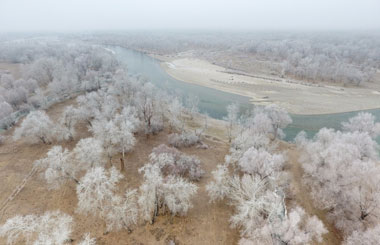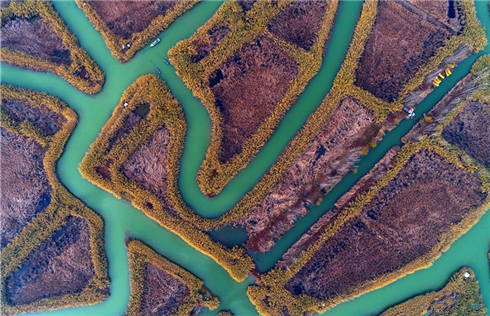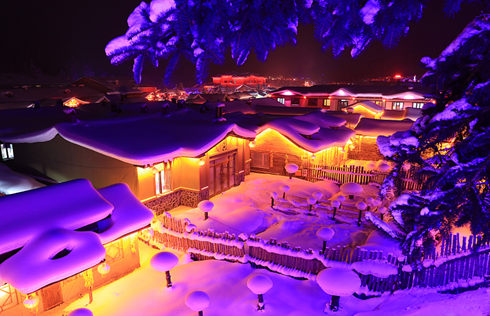The art of hope
 |
|
Villagers pass a wall decorated with traditional New Year Paintings, or nianhua, in Shejiantai village, Mianzhu, Sichuan province. The village, devastated in the earthquake on May 12, 2008, has been rebuilt and is a popular tourist destination these days.[Photo/China Daily] |
An earthquake shattered the lives of the villagers, but in the aftermath of rebuilding, traditional paintings have helped them pick up the pieces. Huang Zhiling and Erik Nilsson report
The Wenchuan earthquake destroyed one-third of the houses in Sichuan province's Shejiantai village, transforming the hometown of the Mianzhu School of New Year Paintings into a portrait of seismic destruction. But reconstruction has reincarnated Shejiantai into a picture-perfect tourist attraction. Murals of New Year Paintings, or nianhua, adorn the exteriors of each of the 2,700 spacious new homes ranging from some 200 to 400 sq m. The houses were built according to local architectural traditions by the government of Suzhou city in East China's Jiangsu province at no cost to the residents.
About a third of the houses in Shejiantai collapsed in the quake, for the buildings in different styles built by the villagers were not strong enough to withstand the shock.
Now the village has been resurrected into a tourism zone, complete with scores of showrooms and museums displaying the works of its about 300 artisans.
"Before the quake, there were no showrooms or museums," says Xu Shipeng, the village head.
Hu Jian, an official from the provincial capital Chengdu, says he was dazzled during a visit to Shejiantai just before the anniversary of the May 12, 2008, tremor.
"This is the most beautiful time of year, because the blooming rapeseed carpets the surrounding fields," he says.
The floral cascades burn like yellow magma pouring from the mountains toward the village. Their blooms glow like millions of torches that light the way for tourists to the village.
The influx of travelers from outside has enabled the reconstructed village of 6,000 residents to open its first restaurants and hotels.
Yin Qunquan had catered feasts for local farmers in their courtyards for 18 years before he opened the first nongjiale (rural family restaurant), Dishes in Eight Big Bowls, in July 2009. Its initial function was to provide a place for reconstruction workers from Suzhou to eat and has since served tourists, offering dishes popular with farmers, such as steamed pork and pumpkin slices.
"Business was sluggish for the first three months," Yin says. "But after the reconstruction was finished last year, travelers began to stream in to enjoy the sights of the painted traditional buildings, greenery and flowers."
Yin says he can now earn a profit of about 300 yuan ($44) a day. That's about double the annual income of 50,000 to 60,000 yuan he could make as a rural caterer.
His success has inspired the opening of three other diners.
Tourism following the post-quake reconstruction has also created a market for Shejiantai's eight new hotels.
This enticed 43-year-old farmer and bulldozer operator Xu Longyou to turn four of the 12 rooms in his new house into guest rooms. The curtains, walls and pillowcases of the rooms are adorned with nianhua.
"Business is good," Xu says. "We're fully booked every weekend."
A night's stay costs between 40 and 50 yuan. Xu can bring in more than 12,000 yuan a year as an hotelier to supplement the 100,000 yuan he earns as a bulldozer operator.
As an average of some 1,000 tourists visit the village each day, it generates an additional 500 yuan for each household there each month, Xu says.
The central government had allocated nearly 30,000 yuan to help every household in Shejiantai rebuild.
While most of the murals in the town feature traditional subjects, such as door guardians, fish and children, one near the museum stands out. It depicts more than a dozen soldiers saving local people during the quake.
For the people of Shejiantai, it is that story of rescue and reconstruction that has enabled the resurrection of the Village of Mianzhu New Year Paintings.














